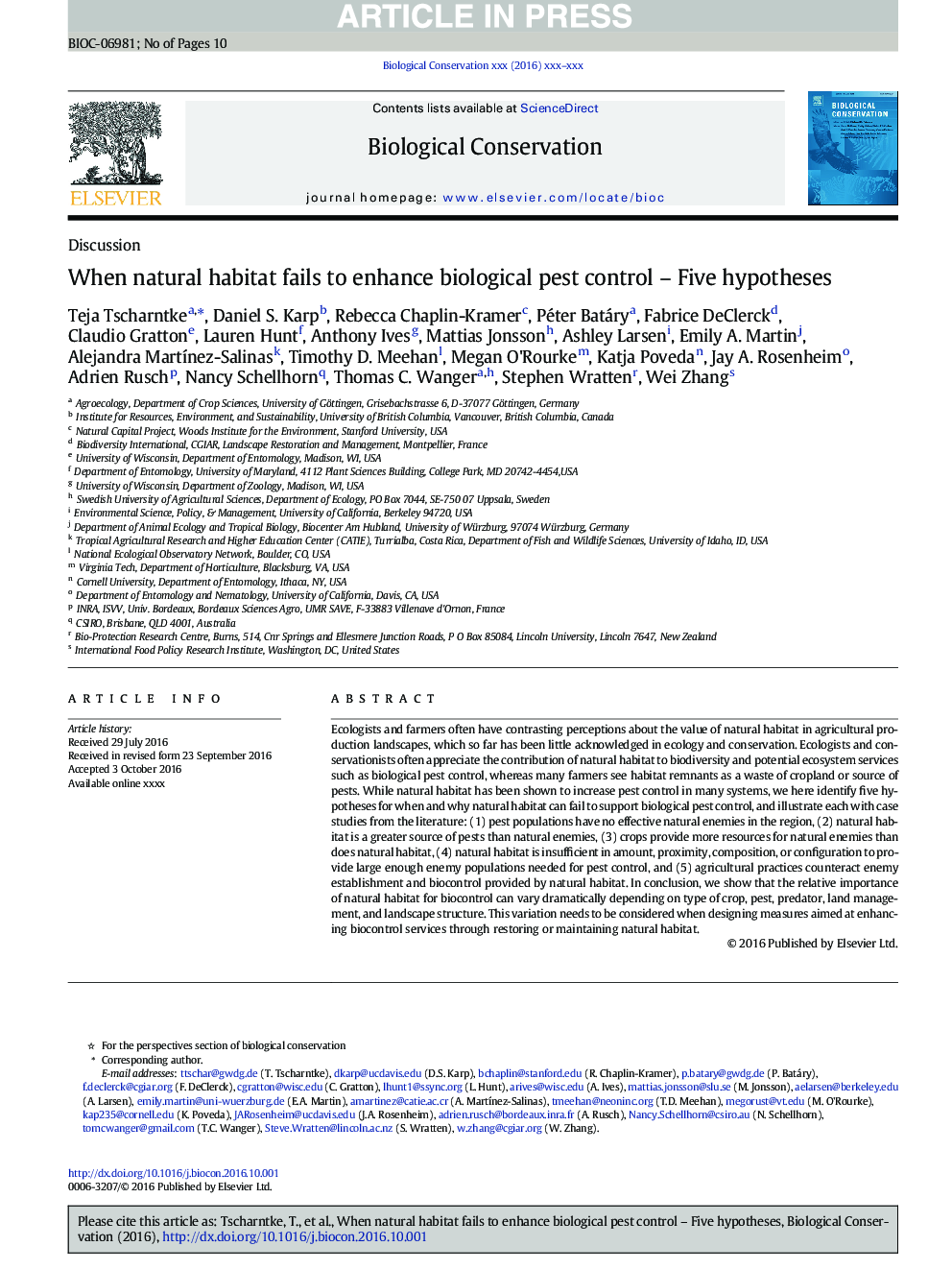| Article ID | Journal | Published Year | Pages | File Type |
|---|---|---|---|---|
| 5743423 | Biological Conservation | 2016 | 10 Pages |
Abstract
Ecologists and farmers often have contrasting perceptions about the value of natural habitat in agricultural production landscapes, which so far has been little acknowledged in ecology and conservation. Ecologists and conservationists often appreciate the contribution of natural habitat to biodiversity and potential ecosystem services such as biological pest control, whereas many farmers see habitat remnants as a waste of cropland or source of pests. While natural habitat has been shown to increase pest control in many systems, we here identify five hypotheses for when and why natural habitat can fail to support biological pest control, and illustrate each with case studies from the literature: (1) pest populations have no effective natural enemies in the region, (2) natural habitat is a greater source of pests than natural enemies, (3) crops provide more resources for natural enemies than does natural habitat, (4) natural habitat is insufficient in amount, proximity, composition, or configuration to provide large enough enemy populations needed for pest control, and (5) agricultural practices counteract enemy establishment and biocontrol provided by natural habitat. In conclusion, we show that the relative importance of natural habitat for biocontrol can vary dramatically depending on type of crop, pest, predator, land management, and landscape structure. This variation needs to be considered when designing measures aimed at enhancing biocontrol services through restoring or maintaining natural habitat.
Keywords
Related Topics
Life Sciences
Agricultural and Biological Sciences
Ecology, Evolution, Behavior and Systematics
Authors
Teja Tscharntke, Daniel S. Karp, Rebecca Chaplin-Kramer, Péter Batáry, Fabrice DeClerck, Claudio Gratton, Lauren Hunt, Anthony Ives, Mattias Jonsson, Ashley Larsen, Emily A. Martin, Alejandra MartÃnez-Salinas, Timothy D. Meehan, Megan O'Rourke,
